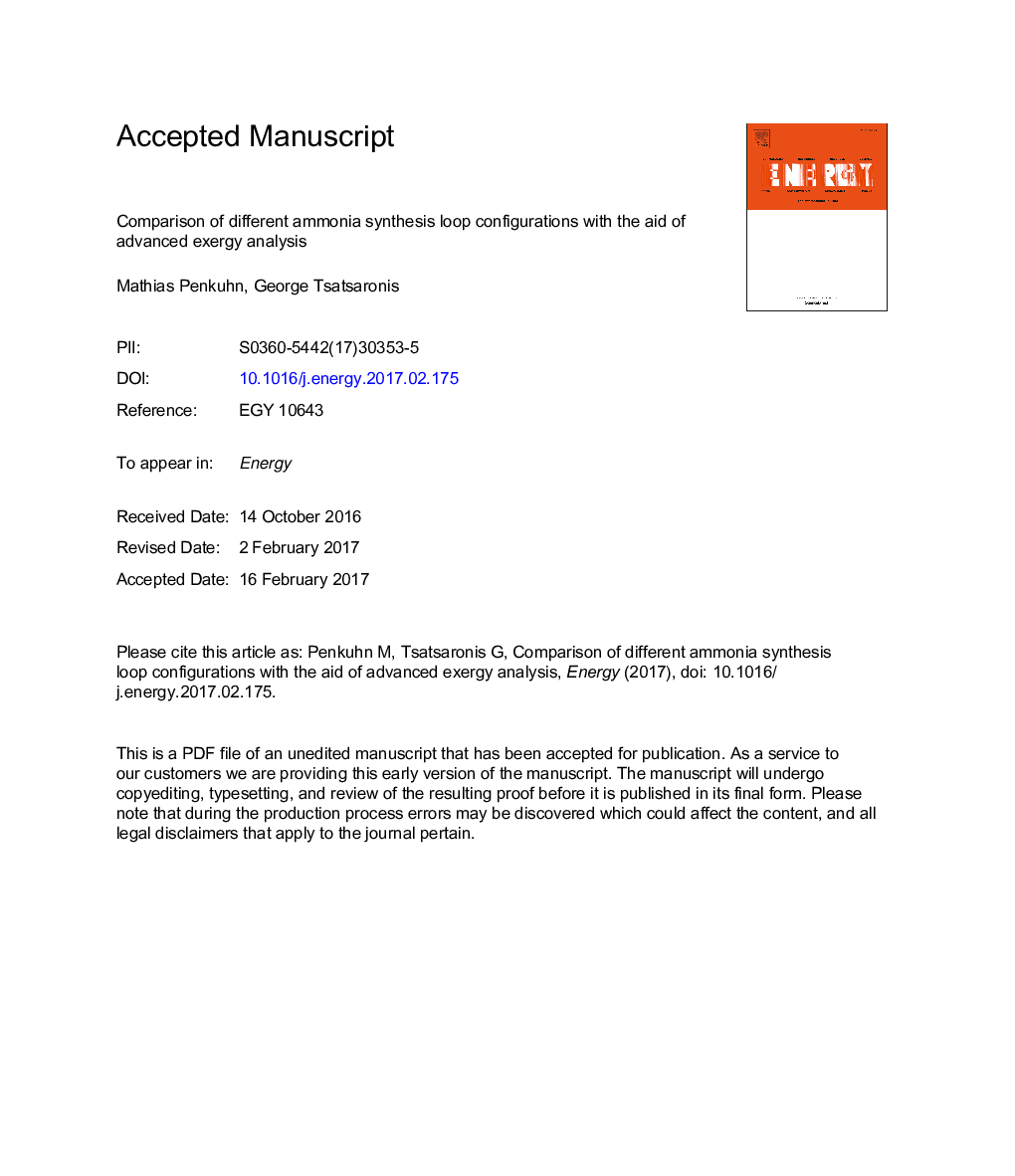| Article ID | Journal | Published Year | Pages | File Type |
|---|---|---|---|---|
| 8072797 | Energy | 2017 | 36 Pages |
Abstract
An industrial ammonia synthesis loop is a complex interconnected system. With the synthesis reactor operated at high-pressure levels and with synthesis gas made of hydrogen and nitrogen, a highly efficient process design is necessary in order to meet the requirements in terms of cost-efficiency and environmental impact. The evaluation and optimization of different designs in the process synthesis phase are generally done by considering mass and energy balances. However, the conclusions drawn from such an analysis can be misleading and provide, if any, little useful information with respect to system improvement. In order to address these issues, an exergy analysis is used to identify the real thermodynamic inefficiencies of a system and its components. Furthermore, a subsequently conducted advanced exergy analysis provides the means to determine the structural interactions within a system and the thermodynamic improvement potential of its components. In this context, two different ammonia synthesis loop configurations are analyzed. The first concept consists of a three-staged adiabatic reactor with intermediate quench cooling, whereas the second design features a cooled reactor.
Related Topics
Physical Sciences and Engineering
Energy
Energy (General)
Authors
Mathias Penkuhn, George Tsatsaronis,
